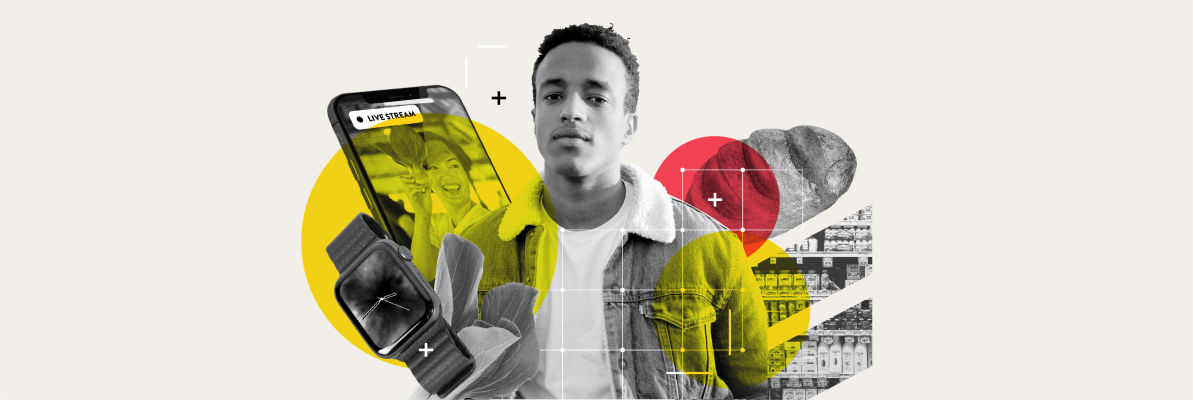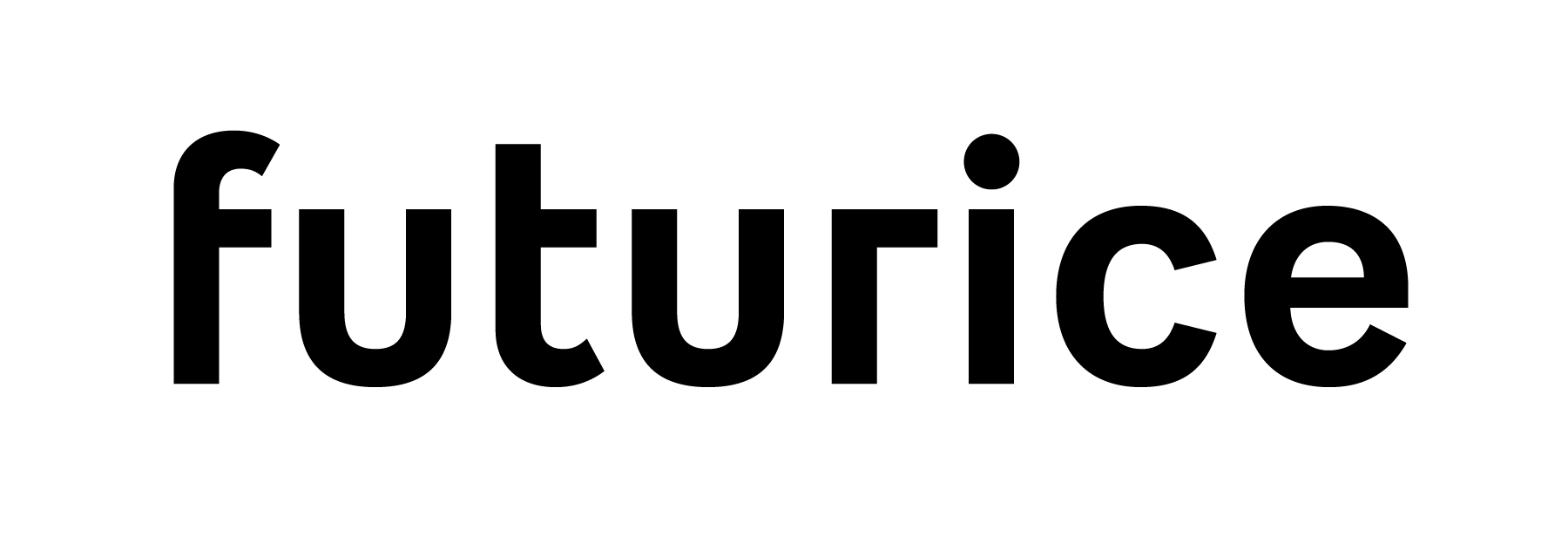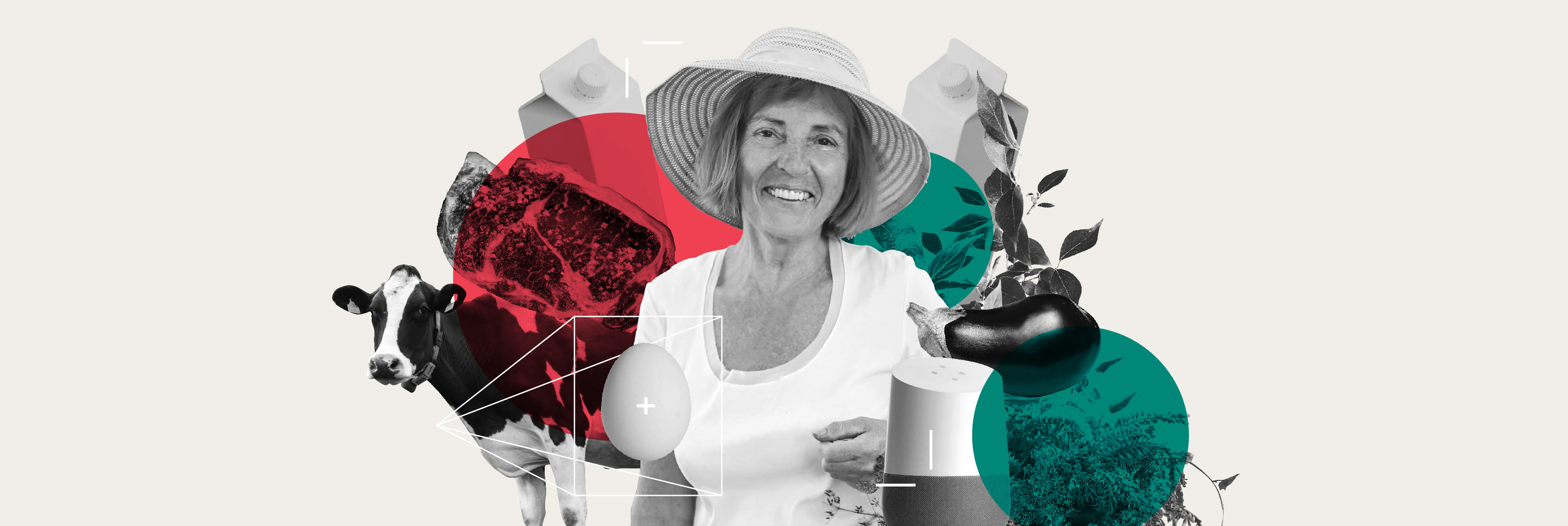
Managing the politically torn consumer base
Do you see yourself going all political over food? In this scenario, players in the retail industry have to carefully navigate a landscape of heated opinions and polarised value systems.
Hi, my name is Maija-Liisa. I live in Eastern Finland with my two cows and boyfriend, Aapo. I’m 65, and Aapo is two years younger. I work as a nurse giving remote consultations and like to visit the gym twice a week. Aapo manages a construction site remotely and goes to the pub to play darts. We always imagined we would feel pretty tired and worn at this point in our lives, but thanks to proper food and exercise, we are doing well.
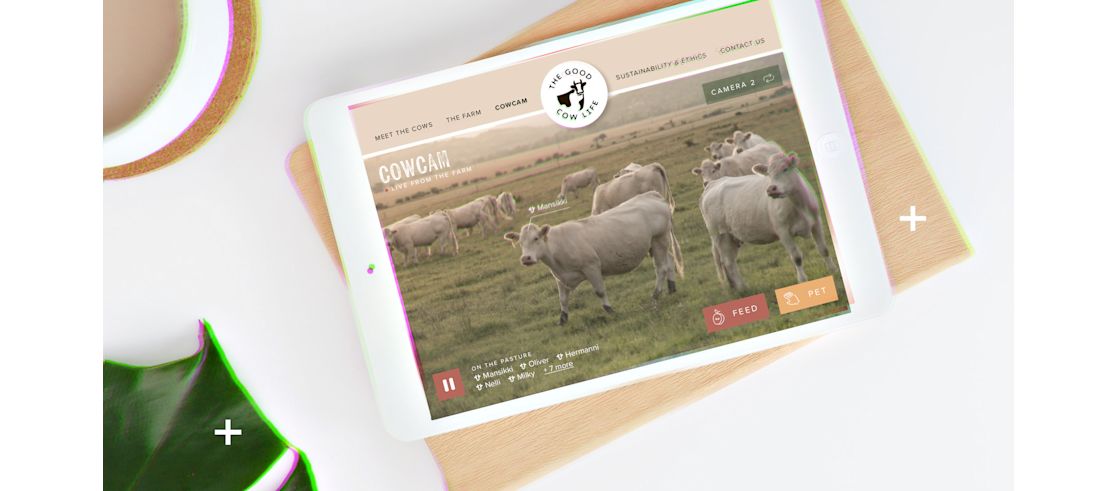
Our cows do not have a website like many other cows. People want to understand where their milk, meat and eggs come from – if they even dare eat them during this climate crisis. I’m always telling my kids that they can always move here, to Joroinen, if it gets too restless in the city, but they say, “no thanks, mom, I’m 45, and I don’t want to live with my parents”.
If somebody had described society as it is today to me ten years ago, I wouldn’t have believed them. It’s not that we don’t have resources - it’s just that we are panicking over the strange weather, throwing stones at each other for our lifestyle choices and are generally grumpy and ready to fight. There are food panics, where a product or how it is made is picked up and criticised for its water footprint, climate impact, tone-deaf branding or other controversies. Or just because people think that it causes asthma, autism, Alzheimers, alopecia… well, you get the picture.

Eating has become political. Many other necessities have, too. As people became used to quasi-meats, there was no longer a need to kill farm animals. But we still do. The youth organisation of one of our political parties uses the age-old metaphor of sharp fangs to represent masculinity, power and our alpha-predator status in nature. They are surprisingly popular. I guess the majority of people are now fighting over eggs. Eggs seem to be a political watershed. I do love eggs.
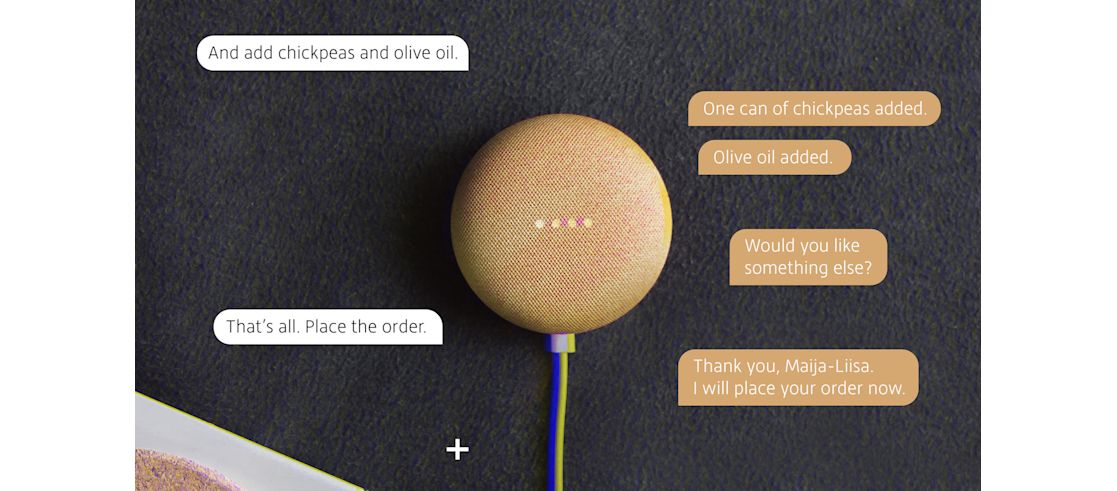
So how do I and Aapo shop? Just like most people, we order our groceries online using voice UI. We talk to our devices about what we need and most often skip the annoying questions about the brands we prefer. I have some products that I need to have from a specific brand – my coffee and my hand lotion – but for other groceries, I’m happy to go with the mid-price default brand the service suggests. Looking at how controversial eating can be, I’m surprised at how many people go with the suggested products. Default products offer good value for money, and I get to skip the process of pondering which low-fat milk, oat cereals, salad or meatless sausages I should choose. If I wanted to, I could check the route of each product from the very beginning to my home, but I have never done that. If the origins weren’t in order, it would be noticed. In case you wondered, we don’t milk our cows but keep them for company. They burp a lot, which is not good for the environment, so let’s keep this between us.
BREAKDOWN OF THE SCENARIO
Consumers
Worsening climate change and other distressing environmental phenomena have caused a feeling of panic in society and pitted consumers against each other. There is a great deal of hostility between environmentalists and traditionalists. Environmentalists have been able to push plant-based options and cruelty-free eating, which has caused a political backlash from people who want things to go on as they always have. It’s likely that the divide is related to deeply felt values rather than the spending power of the consumers. The growing demand for sustainable options has brought the prices of flex meat and other more sustainable products down.
It is also said that many customers are happy with store suggestions for what to buy. This could be an outcome from moving to voice UIs in shopping, but also because consumers are glad to get rid of the tensions and cognitive load of trying to select products that tick all the right boxes in all areas.
Retailers
In this world, retail industry players have to manage somehow the widening gaps between various politicised and polarised consumer bases. Online shopping makes it easier to keep the audiences physically separate. Store spaces could have seen demonstrations, confrontations and even fistfights between radicalised consumers. Shopping has gone online and is assisted by voice UI. Voice UI as technology has given the retailers a chance to push their selection of default products, and they now seem to have greater power to restructure demand. The risks, however, are high. People ask retail companies hard questions about their stance in the great divide, and they have to stand behind each default product. The retail industry has established new roles, such as content creators able to tailor diverse and inclusive politically correct ads and messages. Consumers spot greenwashing right away, which often leads to boycotts of entire brands.
Brands
Brands have become tokens, and in a way, hostages in a political struggle between traditionalists and environmentalists. There are risks in trying to cater to both sides of the political field, and some brands manage it better than others. Product panics are common. False information can be reduced by algorithmic analysis on social media, but the willingness to believe odd stories is very deep-rooted in humans. Broad use of voice UI has resulted in new business models related to the idea of a “default product”. People receive small benefits by settling for the midprice, good value-for-money and end-to-end traceable products pre-selected by the retailer. Selecting default products frees consumers of the cognitive load of decision-making and increases earnings for the retailer. The default brand could be an in-house brand or the brand willing to pay the most for its default status. In this scenario, brands would most likely build their own channels for selling directly to specific consumer bases.
Logistics
Consumers speak their orders to mobile phones, wearables, home voice assistants, cars or smart fridges. They pick up their orders from the store or get them delivered at home. A part of the population displays their values and politics openly and with pride through their consumer choices, and others want to keep such information private. Data related to purchases and deliveries has become even more sensitive. Discretion is required to keep the customers’ business private, leading to some products being delivered in non-descriptive packages.
In this future world, sparsely populated areas also enjoy a working solution for last-mile delivery. Home delivery service is provided mainly by trusted retailers. In some cases, retailers have partnered up with local healthcare authorities and social services, who are delivering the goods. Groceries-with-care services have grown in popularity, especially in the countryside where distances can be long.
Key technologies
When consumption becomes politicised, designing and building secure and robust systems to create value chains that deliver food on our plates is more critical than ever. The grocery industry plays a significant role in making citizens feel safe in society and could easily become a key target for bad actors who want to shake its foundations.
It is not all doom and gloom, though. Technology has helped make food production and value chains more sustainable and transparent. Technology enables the scaling of traceable origins, authenticity and sustainability via blockchain or other secure-by-design methods.
Data-driven platforms and social media require a better understanding and leveraging of value chain data to enable users to make more informed decisions about their consumer habits. Companies must be able to provide new and unbiased information about products to consumers when they want it. Data platforms need to be able to cater to growing needs and flexibility requirements.
Voice assistants provide a key endpoint for shopping for food online. Thanks to their general ease-of-use, voice UIs are becoming more commonplace. But issues remain, including privacy, and voice UI is not a usability silver bullet for. It also places new kinds of demands on the products being sold since a visible representation of the product is not necessarily present in the interaction. What makes a service stand out are the sophisticated, connected data systems under the hood. In addition to providing an optimised, secure and effortless shopping experience, services must be able to mine vast amounts of customer data to create accurate recommendations and consumer profiles for the default product paradigm to work.
Technological enablers
- Data platforms
- Blockchain
- Machine learning
- Voice UI
Winners and losers
In this scenario, brands need to be savvy in messaging, action and “supply chain aesthetics”. However, customers’ trust could be lost overnight as there are a lot of impulses and misinformation disturbing consuming patterns. In the story, online stores with voice assisting technologies make brands compete over and pay for their default status. It’s unlikely that brands would settle for this arrangement. They would attempt to reach consumers directly, especially if they have a clear audience politically inclined to buy their products. Whoever builds the most robust and secure systems and best end-to-end visibility over the supply chains in this volatile environment is the most likely winner. Transparent systems may make the brand feel neutral, attracting even more trust.







